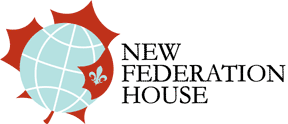
|
THE GOVERNORS OF THE BANK OF CANADA
Jean Chevrier, Gerald G. Gummersell & D. L. Daigneault, Editors ISBN 978-1-987832-16-7 Foreword James Powell The Bank of Canada is Canada’s central bank. It is one of our most important national institutions. Its mandate, given to it by Parliament and set out in the Bank of Canada Act, is “to regulate credit and currency in the best interest of the economic life of the nation, to control and protect the external value of the national monetary unit and to mitigate by its influence fluctuations in the general level of production, trade, prices and employment, so far as may be possible within the scope of monetary action.” The Bank is also charged more generally “to promote the economic and financial welfare of Canada.” The central bank’s actions with respect to interest rates, our currency and the financial system affect the lives of all Canadians, both directly and indirectly. Its most visible product, banknotes, is literally the money in our pockets. The Bank was established during the depth of the Great Depression by the Conservative government of R. B. Bennett following a recommendation of a Royal Commission on Banking and Currency headed by Lord Macmillan, an eminent British jurist. At the time, there was widespread criticism of both the chartered banks and the Canadian financial system. The creation of a central bank was seen as a way to help alleviate the economic crisis in Canada fuelled by the global slump in demand and drought in the prairies. Prior to this time, Canada had made do without an official central bank. The chartered banks provided credit to a largely rural population through their widespread branch networks. They also issued most of the banknotes in circulation. Through the nineteenth and early twentieth centuries, the Bank of Montreal, which was the single-most important financial institution in Canada, assumed some the activities typically associated with a central bank. Most importantly, it acted as financial agent for the federal government, both domestically and internationally, as well as for provinces and municipalities. In many respects, the Bank of Montreal became Canada’s banker. It was associated with the financing of this country’s great projects of the era, such as building the Canadian Pacific Railway during the 1880s. Notwithstanding the central role that the Bank of Montreal played in Canadian financial life, there was little scope for active monetary policy during these years. This changed when the Bank of Canada opened for business in March 1935 under the leadership of its first Governor, Graham Towers. From opening day, the Bank of Canada immediately assumed responsibility for monetary policy and took over other central banking functions previously carried out by government departments. It also began issuing Canada’s banknotes. Currency issued by the chartered banks was slowly phased out. As well, the Bank began acting as advisor to the government on economic and financial issues, and later took responsibility for managing the government’s debt. Initially, the Bank of Canada was a widely held private institution. The Government of the day believed a privately owned central bank would be freer from political interference than a publicly owned institution. At that time, most of the world’s central banks were privately owned. After the election of a Liberal government under William Lyon Mackenzie King in 1936, the Bank of Canada was nationalized. The economic and financial environment in which the Bank of Canada operates has changed dramatically over the decades. But the mandate given to the central bank by Parliament in the mid-1930s continues to be as relevant now as it was more than eighty years ago. Today, the Bank preserves the domestic purchasing power of our currency by keeping inflation low, stable and predictable. Inflation control is not viewed as an end in itself, but the contribution the central bank can make toward sustained economic growth and a high level of employment. As the sole supplier of Canada’s banknotes, the Bank meets the public’s demand for currency and keeps our money secure from counterfeiting. As the government’s banker or fiscal agent, it manages foreign exchange reserves and the Canadian dollar accounts of the federal Receiver General through which flow all government’s receipts and payments. It also acts on the government’s behalf with respect to issues of marketable debt as well as retail debt instruments. Finally, since a healthy financial system is vital for a healthy economy, the Bank fosters a stable and efficient financial system, which includes financial institutions, such as banks and credit unions, financial markets, and payment and settlement systems. Since what happens abroad can affect Canada, the Bank of Canada also cooperates with other central banks, foreign governments and international financial institutions such as the International Monetary Fund in Washington, D.C., and the Bank for International Settlements in Basel, Switzerland to promote a robust, global economic and financial system. Today, the Bank of Canada is recognized as one of the world’s leading central banks. In 2018, Central Banking, a London-based journal, named the Bank of Canada as the central bank of the year. It wrote: “The Canadian central bank has stood out for its ever-improving levels of transparency, forward-looking management and best-practice review of its policy mandate… [It] represents something of a benchmark for a modern-day, operationally independent central bank.” The Bank’s success is a testament to the economic and financial acumen of the Bank’s staff and the strong leadership of successive governors. Authors
|
|